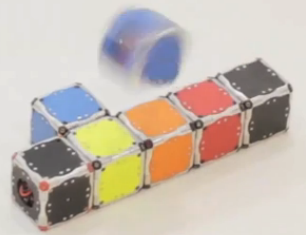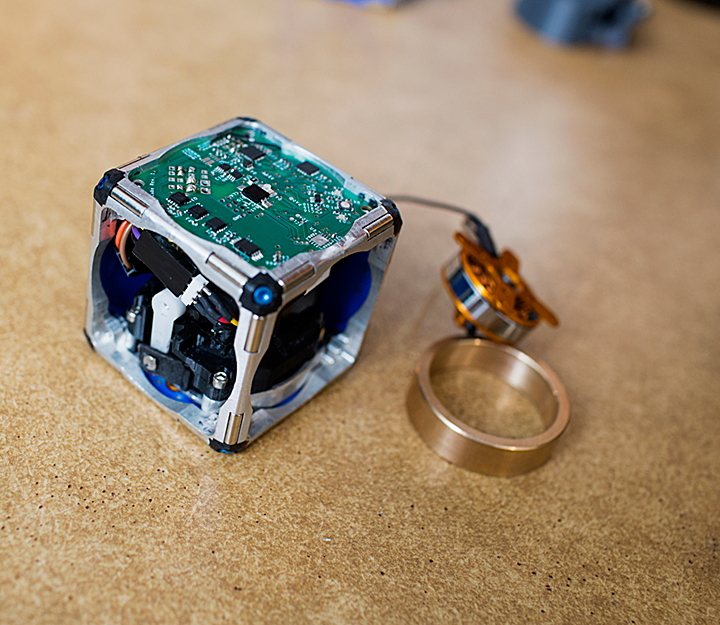MIT inventor unleashes hundreds of self-assembling cube swarmbots
October 4, 2013
[+]
The experts said it couldn’t be done. But research scientist John Romanishin of MIT’s Computer Science and Artificial Intelligence Laboratory (CSAIL) has created M-Blocks — cube robots with no external moving parts.
Self-assembling swarming microbots (credit: MIT)
Despite that, they can magically climb over and around one another, leap through the air, roll across the ground, snap together into different shapes, and even move while suspended upside down from metallic surfaces.
Self-assembling swarmbots
Imagine hordes of swarming microbots that can self-assemble, like the “liquid steel” androids in the movie “Terminator II.”
Armies of these mobile cubes could temporarily repair bridges or buildings during emergencies. These cubes could assemble into different types of furniture or heavy equipment as needed. And they could swarm into environments hostile or inaccessible to humans, diagnose problems, and then reorganize themselves to provide solutions.
They could even be special-purpose cubes: containing cameras, or lights, or battery packs, or other equipment that the mobile cubes could transport.
How M-Blocks work

A
prototype of a new modular robot, with its innards exposed and its
flywheel — which gives it the ability to move independently — pulled out
(credit: M. Scott Brauer, MIT)
To compensate for its static instability, the researchers’ robot relies on some ingenious engineering. On each edge of a cube are two cylindrical magnets, mounted like rolling pins.
When two cubes approach each other, the magnets naturally rotate, so that north poles align with south, and vice versa. Any face of any cube can thus attach to any face of any other.
The cubes’ edges are also beveled, so when two cubes are face to face, there’s a slight gap between their magnets. When one cube begins to flip on top of another, the bevels, and thus the magnets, touch. The connection between the cubes becomes much stronger, anchoring the pivot. On each face of a cube are four more pairs of smaller magnets, arranged symmetrically, which help snap a moving cube into place when it lands on top of another.
A cube army
The MIT researchers are currently building an army of 100 cubes, each of which can move in any direction, and designing algorithms to guide them. “We want hundreds of cubes, scattered randomly across the floor, to be able to identify each other, coalesce, and autonomously transform into a chair, or a ladder, or a desk, on demand,” Romanishin says.
Romanishin, robotics professor Daniela Rus, and postdoc Kyle Gilpin will present a paper describing their new robots at the IEEE/RSJ International Conference on Intelligent Robots and Systems in Japan in November.
(¯`*• Global Source and/or more resources at http://goo.gl/zvSV7 │ www.Future-Observatory.blogspot.com and on LinkeIn Group's "Becoming Aware of the Futures" at http://goo.gl/8qKBbK │ @SciCzar │ Point of Contact: www.linkedin.com/in/AndresAgostini
 Washington
Washington